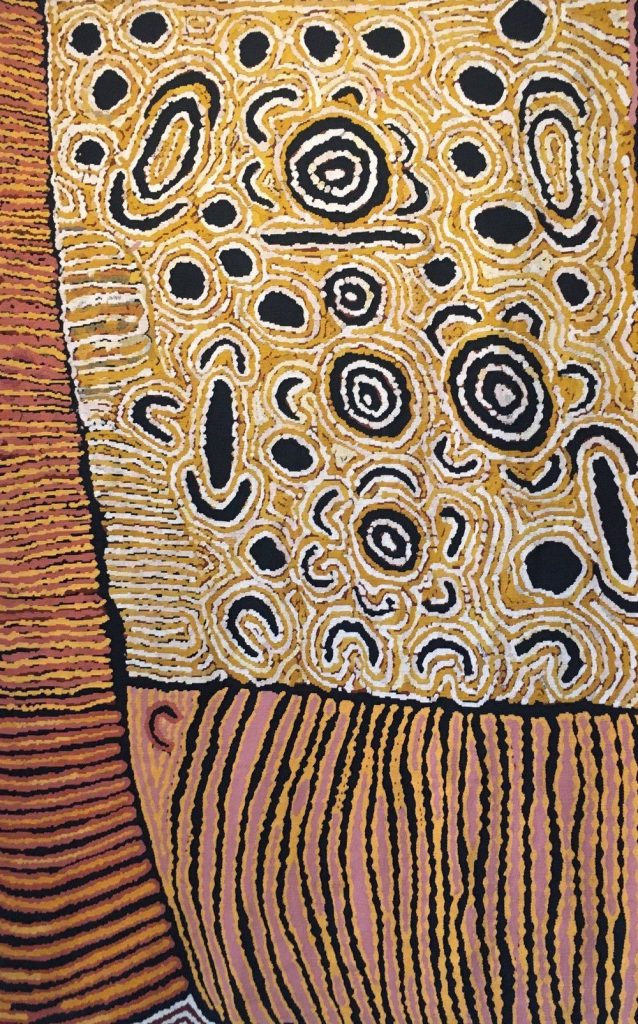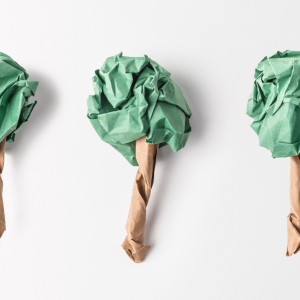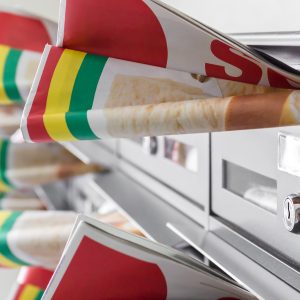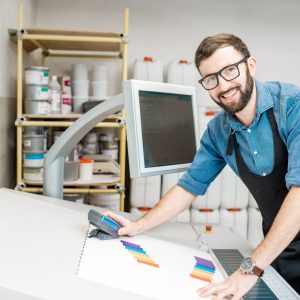
Archaeology, the tapestry that weaves together the threads of human history, continually unfolds new chapters. In the modern age, technology plays a pivotal role, reshaping the way archaeologists document, study, and preserve ancient civilizations. Among the array of technological marvels at their disposal, printing technology stands as a cornerstone. Its multifaceted applications, from replicating delicate artifacts to reconstructing entire archaeological sites, have transformed the field, elevating our understanding of the past and paving the way for future discoveries. This extensive exploration delves deep into the intricate interplay between archaeology and printing technology, unraveling the diverse dimensions of its applications, technological intricacies, and the profound implications for cultural preservation.
I. Documenting the Past: The Dawn of a New Era
**1. ** Historical Documentation Techniques:
The genesis of archaeological documentation dates back to explorers sketching their discoveries and meticulously maintaining handwritten notes. These rudimentary methods, though valuable in their time, often lacked the precision required to capture the intricate details of ancient artifacts. The advent of printing technology heralded a new era, offering archaeologists the ability to reproduce these details with unprecedented accuracy. The transition from manual illustration to digital precision marked a paradigm shift, enabling archaeologists to document finds comprehensively and share this knowledge on a global scale.
**2. ** Digital Revolution and Precision Documentation:
The digital revolution empowered archaeologists with cutting-edge tools like 3D scanners, drones, and Geographic Information Systems (GIS). 3D scanners, with their ability to capture the topography of artifacts with remarkable detail, became instrumental in the preservation process. Drones equipped with high-resolution cameras soared above excavation sites, capturing intricate details that were once impossible to document comprehensively. GIS technology integrated diverse datasets into layered maps, providing a holistic view of archaeological landscapes. Printing technology seamlessly intertwined with these digital advancements, translating intricate digital datasets into tangible, physical forms that archaeologists could study, analyze, and share.
II. 3D Printing: Breathing Life Into Ancient Artifacts and Sites
**1. ** Replication and Reconstruction:
At the heart of 3D printing lies its transformative ability to resurrect ancient artifacts. Through this technology, archaeologists can create replicas of fragile relics with astonishing precision. These replicas, far more than mere duplicates, serve as tangible links to history. They act as educational tools, allowing students, researchers, and enthusiasts to study and interact with historical objects without risking damage to the originals. Moreover, 3D printing aids in the reconstruction of fragmented artifacts, providing crucial insights into their original forms and functions. In essence, 3D printing becomes a bridge between epochs, allowing us to touch and feel the echoes of civilizations long past.
**2. ** Site Conservation and Reconstruction:
The applications of 3D printing extend beyond individual artifacts to entire archaeological sites. Architects and archaeologists collaborate to create 3D-printed models of ancient structures. These models, crafted with meticulous attention to detail, offer a glimpse into the architectural marvels of bygone eras. Conservationists utilize these models to develop restoration strategies, ensuring the preservation of historical sites for future generations. Through 3D printing, archaeological sites are not only documented but also preserved in a manner that allows researchers to explore their spatial layouts and cultural significance in intricate detail.
III. Documenting Excavation Sites: Precision Mapping and Visualizations
**1. ** Aerial Imaging and GIS Integration:
The synergy between aerial imaging and GIS integration has revolutionized the documentation of excavation sites. Drones, equipped with high-resolution cameras, capture these sites from breathtaking heights, offering a bird’s-eye view of historical landscapes. These images, when integrated into GIS platforms, provide a wealth of information. GIS overlays, comprising historical maps, geological data, and excavation grids, transform these images into dynamic, layered maps. Printing these maps transcends the digital realm, providing archaeologists with tangible references for site analysis, interpretation, and future excavations. The physicality of printed maps enhances the collaborative aspect of archaeological research, allowing experts to gather around a tangible representation of the site and strategize their excavation endeavors.
**2. ** Augmented Reality and Site Visualization:
The integration of Augmented Reality (AR) with printing technology takes the visualization of archaeological sites to unprecedented heights. Through AR applications, historical reconstructions are superimposed onto excavation sites, allowing researchers to explore the past in real-time. Printed markers act as triggers for these visualizations, creating an immersive experience that blurs the boundaries between the ancient and the modern. Researchers and students can use AR-enabled devices to interact with historical elements projected onto printed materials, offering an engaging and educational experience. This blend of printed markers and augmented reality technology not only enhances the depth of site visualization but also enriches the learning experience for archaeologists and enthusiasts alike.
IV. Educational Outreach and Public Engagement: Immersive Experiences
**1. ** **
Interactive Exhibits and Hands-On Learning:**
Museums, once static repositories of artifacts, have transformed into interactive learning spaces. 3D-printed artifacts, coupled with interactive exhibits, invite visitors into the past. The tactile experience of touching a replica of an ancient tool or pottery piece fosters a deeper connection with history. Printed educational materials, such as brochures and pamphlets, complement these exhibits, providing visitors with in-depth knowledge about the displayed artifacts. The fusion of printed materials and interactive exhibits creates a multisensory experience, encouraging visitors to engage with the past in a meaningful and memorable way.
**2. ** Virtual Reality and Time Travel:
Virtual Reality (VR) technology transcends traditional boundaries, offering users the opportunity to travel through time and explore archaeological sites in their prime. VR headsets transport users to ancient civilizations, allowing them to virtually walk through historical landscapes and interact with long-lost artifacts. Printed VR guides, complete with detailed maps and historical context, enhance this experience, guiding users through immersive archaeological journeys. By combining the immersive capabilities of VR with printed guides, archaeologists and educators create dynamic educational experiences, enabling users to excavate artifacts, reconstruct ancient structures, and witness historical events, all from the comfort of their homes.
V. Preserving Indigenous Knowledge: A Tapestry of Cultural Heritage
**1. ** Indigenous Artifacts and Cultural Preservation:
Indigenous communities, rich in cultural heritage, often possess invaluable artifacts and traditional knowledge. 3D scanning technology meticulously captures these artifacts, preserving their essence digitally. 3D printing then materializes these artifacts, creating tangible records that safeguard indigenous heritage. Oral traditions and cultural practices can be documented through printed materials, ensuring the transmission of knowledge to future generations. The preservation of indigenous artifacts and practices through 3D printing becomes a testament to the resilience and cultural richness of indigenous communities.
**2. ** Community Empowerment and Collaboration:
The collaboration between archaeologists and indigenous communities is facilitated by printing technology. Replicated artifacts become educational tools, empowering indigenous communities to share their heritage with the world. Printed materials, available in native languages, serve as bridges, connecting the ancient wisdom of indigenous cultures with a global audience. Collaborative efforts ensure that cultural preservation is not a distant endeavor but a collective responsibility. By combining traditional knowledge with cutting-edge technology, archaeologists and indigenous communities work hand in hand, fostering mutual respect and understanding. The preservation and celebration of indigenous heritage through printing technology become a testament to the vibrant tapestry of human culture.
VI. Conclusion: Nurturing the Seeds of Knowledge, Embracing the Future
In the intricate dance between the ancient and the modern, printing technology emerges as a bridge, connecting us with our ancestors and propelling us into the future. Through the meticulous replication of artifacts, the precision mapping of excavation sites, and the immersive experiences of interactive exhibits and virtual reality, printing technology not only preserves our shared human heritage but also ensures that it thrives in the digital age.
As archaeologists, historians, educators, and cultural custodians, we stand on the threshold of endless possibilities. The integration of printing technology into the fabric of archaeology transcends its utilitarian functions; it becomes a beacon of understanding, guiding us through the labyrinth of history. With each replicated artifact and interactive visualization, we unearth not only the relics of ancient civilizations but also the stories, wisdom, and aspirations of the people who once walked this earth.
In this symbiotic relationship between the past and the present, we are not merely observers; we are custodians of a legacy. Through the marvels of printing technology, we breathe life into the stones, pottery, and remnants of our ancestors. We bridge cultures, foster understanding, and weave a tapestry of knowledge that transcends borders and languages. As we journey into the future, let us do so with the wisdom of the past guiding our way and the marvels of printing technology illuminating our path. Together, we preserve our shared human heritage, ensuring that the whispers of antiquity echo through the halls of time, inspiring generations yet unborn to explore, discover, and cherish the wonders of our collective past. In the embrace of printing technology, we nurture the seeds of knowledge, embracing the future with open arms and the unwavering belief that the pursuit of understanding is a timeless and boundless endeavor.
Printing in Archaeology: A Comprehensive Exploration of Technological Marvels and Cultural Preservation
Archaeology, the tapestry that weaves together the threads of human history, continually unfolds new chapters. In the modern age, technology plays a pivotal role, reshaping the way archaeologists document, study, and preserve ancient civilizations. Among the array of technological marvels at their disposal, printing technology stands as a cornerstone. Its multifaceted applications, from replicating delicate artifacts to reconstructing entire archaeological sites, have transformed the field, elevating our understanding of the past and paving the way for future discoveries. This extensive exploration delves deep into the intricate interplay between archaeology and printing technology, unraveling the diverse dimensions of its applications, technological intricacies, and the profound implications for cultural preservation.
I. Documenting the Past: The Dawn of a New Era
**1. ** Historical Documentation Techniques:
The genesis of archaeological documentation dates back to explorers sketching their discoveries and meticulously maintaining handwritten notes. These rudimentary methods, though valuable in their time, often lacked the precision required to capture the intricate details of ancient artifacts. The advent of printing technology heralded a new era, offering archaeologists the ability to reproduce these details with unprecedented accuracy. The transition from manual illustration to digital precision marked a paradigm shift, enabling archaeologists to document finds comprehensively and share this knowledge on a global scale.
**2. ** Digital Revolution and Precision Documentation:
The digital revolution empowered archaeologists with cutting-edge tools like 3D scanners, drones, and Geographic Information Systems (GIS). 3D scanners, with their ability to capture the topography of artifacts with remarkable detail, became instrumental in the preservation process. Drones equipped with high-resolution cameras soared above excavation sites, capturing intricate details that were once impossible to document comprehensively. GIS technology integrated diverse datasets into layered maps, providing a holistic view of archaeological landscapes. Printing technology seamlessly intertwined with these digital advancements, translating intricate digital datasets into tangible, physical forms that archaeologists could study, analyze, and share.
II. 3D Printing: Breathing Life Into Ancient Artifacts and Sites
**1. ** Replication and Reconstruction:
At the heart of 3D printing lies its transformative ability to resurrect ancient artifacts. Through this technology, archaeologists can create replicas of fragile relics with astonishing precision. These replicas, far more than mere duplicates, serve as tangible links to history. They act as educational tools, allowing students, researchers, and enthusiasts to study and interact with historical objects without risking damage to the originals. Moreover, 3D printing aids in the reconstruction of fragmented artifacts, providing crucial insights into their original forms and functions. In essence, 3D printing becomes a bridge between epochs, allowing us to touch and feel the echoes of civilizations long past.
**2. ** Site Conservation and Reconstruction:
The applications of 3D printing extend beyond individual artifacts to entire archaeological sites. Architects and archaeologists collaborate to create 3D-printed models of ancient structures. These models, crafted with meticulous attention to detail, offer a glimpse into the architectural marvels of bygone eras. Conservationists utilize these models to develop restoration strategies, ensuring the preservation of historical sites for future generations. Through 3D printing, archaeological sites are not only documented but also preserved in a manner that allows researchers to explore their spatial layouts and cultural significance in intricate detail.
III. Documenting Excavation Sites: Precision Mapping and Visualizations
**1. ** Aerial Imaging and GIS Integration:
The synergy between aerial imaging and GIS integration has revolutionized the documentation of excavation sites. Drones, equipped with high-resolution cameras, capture these sites from breathtaking heights, offering a bird’s-eye view of historical landscapes. These images, when integrated into GIS platforms, provide a wealth of information. GIS overlays, comprising historical maps, geological data, and excavation grids, transform these images into dynamic, layered maps. Printing these maps transcends the digital realm, providing archaeologists with tangible references for site analysis, interpretation, and future excavations. The physicality of printed maps enhances the collaborative aspect of archaeological research, allowing experts to gather around a tangible representation of the site and strategize their excavation endeavors.
**2. ** Augmented Reality and Site Visualization:
The integration of Augmented Reality (AR) with printing technology takes the visualization of archaeological sites to unprecedented heights. Through AR applications, historical reconstructions are superimposed onto excavation sites, allowing researchers to explore the past in real-time. Printed markers act as triggers for these visualizations, creating an immersive experience that blurs the boundaries between the ancient and the modern. Researchers and students can use AR-enabled devices to interact with historical elements projected onto printed materials, offering an engaging and educational experience. This blend of printed markers and augmented reality technology not only enhances the depth of site visualization but also enriches the learning experience for archaeologists and enthusiasts alike.
IV. Educational Outreach and Public Engagement: Immersive Experiences
**1. ** **
Interactive Exhibits and Hands-On Learning:**
Museums, once static repositories of artifacts, have transformed into interactive learning spaces. 3D-printed artifacts, coupled with interactive exhibits, invite visitors into the past. The tactile experience of touching a replica of an ancient tool or pottery piece fosters a deeper connection with history. Printed educational materials, such as brochures and pamphlets, complement these exhibits, providing visitors with in-depth knowledge about the displayed artifacts. The fusion of printed materials and interactive exhibits creates a multisensory experience, encouraging visitors to engage with the past in a meaningful and memorable way.
**2. ** Virtual Reality and Time Travel:
Virtual Reality (VR) technology transcends traditional boundaries, offering users the opportunity to travel through time and explore archaeological sites in their prime. VR headsets transport users to ancient civilizations, allowing them to virtually walk through historical landscapes and interact with long-lost artifacts. Printed VR guides, complete with detailed maps and historical context, enhance this experience, guiding users through immersive archaeological journeys. By combining the immersive capabilities of VR with printed guides, archaeologists and educators create dynamic educational experiences, enabling users to excavate artifacts, reconstruct ancient structures, and witness historical events, all from the comfort of their homes.
V. Preserving Indigenous Knowledge: A Tapestry of Cultural Heritage

**1. ** Indigenous Artifacts and Cultural Preservation:
Indigenous communities, rich in cultural heritage, often possess invaluable artifacts and traditional knowledge. 3D scanning technology meticulously captures these artifacts, preserving their essence digitally. 3D printing then materializes these artifacts, creating tangible records that safeguard indigenous heritage. Oral traditions and cultural practices can be documented through printed materials, ensuring the transmission of knowledge to future generations. The preservation of indigenous artifacts and practices through 3D printing becomes a testament to the resilience and cultural richness of indigenous communities.
**2. ** Community Empowerment and Collaboration:
The collaboration between archaeologists and indigenous communities is facilitated by printing technology. Replicated artifacts become educational tools, empowering indigenous communities to share their heritage with the world. Printed materials, available in native languages, serve as bridges, connecting the ancient wisdom of indigenous cultures with a global audience. Collaborative efforts ensure that cultural preservation is not a distant endeavor but a collective responsibility. By combining traditional knowledge with cutting-edge technology, archaeologists and indigenous communities work hand in hand, fostering mutual respect and understanding. The preservation and celebration of indigenous heritage through printing technology become a testament to the vibrant tapestry of human culture.
Nurturing the Seeds of Knowledge, Embracing the Future
In the intricate dance between the ancient and the modern, printing technology emerges as a bridge, connecting us with our ancestors and propelling us into the future. Through the meticulous replication of artifacts, the precision mapping of excavation sites, and the immersive experiences of interactive exhibits and virtual reality, printing technology not only preserves our shared human heritage but also ensures that it thrives in the digital age.
As archaeologists, historians, educators, and cultural custodians, we stand on the threshold of endless possibilities. The integration of printing technology into the fabric of archaeology transcends its utilitarian functions; it becomes a beacon of understanding, guiding us through the labyrinth of history. With each replicated artifact and interactive visualization, we unearth not only the relics of ancient civilizations but also the stories, wisdom, and aspirations of the people who once walked this earth.
In this symbiotic relationship between the past and the present, we are not merely observers; we are custodians of a legacy. Through the marvels of printing technology, we breathe life into the stones, pottery, and remnants of our ancestors. We bridge cultures, foster understanding, and weave a tapestry of knowledge that transcends borders and languages. As we journey into the future, let us do so with the wisdom of the past guiding our way and the marvels of printing technology illuminating our path. Together, we preserve our shared human heritage, ensuring that the whispers of antiquity echo through the halls of time, inspiring generations yet unborn to explore, discover, and cherish the wonders of our collective past. In the embrace of printing technology, we nurture the seeds of knowledge, embracing the future with open arms and the unwavering belief that the pursuit of understanding is a timeless and boundless endeavor.





